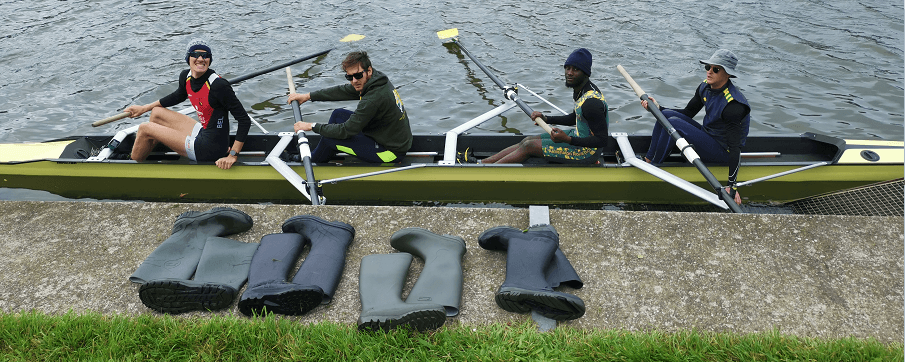Rowing
History of the sport of rowing
Rowing is the best sport on hearth, good for your health
Since time immemorial, men have sailed the waters ways, rivers or the sea.
For centuries the Egyptians, the Greeks and the Phoenicians used the arm strength to move their boats before using the wind.
The Phoenicians were using silk cushions in order not only to use arms only but combining is with legs.
But even if the ancients considered an honor to row their boats and triremes, it quickly became a galley slave task. Sails and sailing use put an end to that slavery..
From half of the 19th century, Rowing became more of a sport and clubs are started in Belgium too and regattas organized like the one on the canal at “Terdonk”, or on the canal in Brussels – Grimbergen, where we row, and the other major cities.
Technique
The technique in Rowing is also changing.
From heavy boats, tubs, wide, clinkers, fitted with fixed tholes (two long pins slightly spaced from each other, fixed to the boat edges to allow the oar to rotate in it) and fixed seat (no leg action) called skiff, we move gradually to narrower boats.
These were lighter and their hull is made of wood sheets, with outriggers mounted on the sax boards of the boat to fix oarlocks and swivels supporting oars and sculls (paddles).
At that time, the first fixed seats make place to seats equipped with wheels which roll on rails increasingly longer with the time, from 30 cm, 60, 80 and 90 cm over time.
Even if the rowing technique seems simple, it is not that much. The old coach René Vingerhout said it takes 12 years to make a good rower, didn’t he?.
Moreover, the technique has also evolved, from a very broad body and arms extension, almost lying down, forward and back, due to the lack of seat slide length, to a more upright body posture thanks to a every decade longer seat sliding.
The stroke steps
- the draw, moving the boat forward, pressure of the oars/sculls in the water
- the end of the stroke, the extraction of oars/sculls, blades (part at the end of the oars/sculls)
- the recovery, sliding forward to get back to the beginning of e new stroke (body forward, blades out and above the water)
- and the catch, diving oars/sculls in the water. So, these steps, the stroke, require the measure and mastering, flexibility and also precision as well as power.
A fine tuning operation.
S. Fairburn, an Australian coach of English college Christ Church in Cambridge, came up first with this theory of flexibility in the rowing stroke.
He is also the author of the saying “miles makes champions.”
Karl Adam, a famous German coach, was also the promotor of a clean, neat and efficient, based on mathematics, rowing technique.
Equipment
There are 8 categories of rowing boats,
3 called “sculling” with two sculls by rowers, 5 called “sweep rowing” with one oar per rower.
In “sculling”, the single scull, one rower, double scull with two rowers, and quadruple scull, four oarsmen.
In “sweep rowing”: the coxless pairs with two rowers, the coxed pair with coxswain, two rowers and a coxswain, the coxless fours and coxed four or eight with coxswain.
The later is always coxed with eight rowers and a coxswain, this is the “king” of boats.
There is also sculling eights in some countries for young girls and boys under 15 years, also called octopulls … to be promoted in Belgium.
Olympic categories
- The single scull
- Double (double sculls)
- The double light weights (70kg rowers +/-)
- The coxless pair
- The quadruple sculls
- the coxless four
- the lightweight coxless four
- Eight
Racing
Races and competitions takes place on a 2,000 meters distance for Olympic and international regattas.
Races for young rowers under 15 take place on 1000 meters for the « masters », more than 27 years rowers.
There are also in the winter “heads of rivers” on longer distances, more kilometers.
The Oxford-Cambridge race is competed over 4 miles and 250 yards, for example.
Finally there is also the sprint races on 500 or 1000 meters. There are also “wandering rowing encountering” whose distance is not compulsory or regulated and depends on the tourist interest of the way.
the international rowing federation takes care of international calender for international races … to check here = https://worldrowing.com/
Ready to start? Join us now!
Fill in the form and send it back to us.
If you want to row in Brussels, that you come from abroad and would like to make sport in Grimbergen, you are at the right place.
Row in Brussels is better just in the outskirts with a beautiful landscape, just 10 km from the center … row near Brussels and Flemish Brabant is by us !

